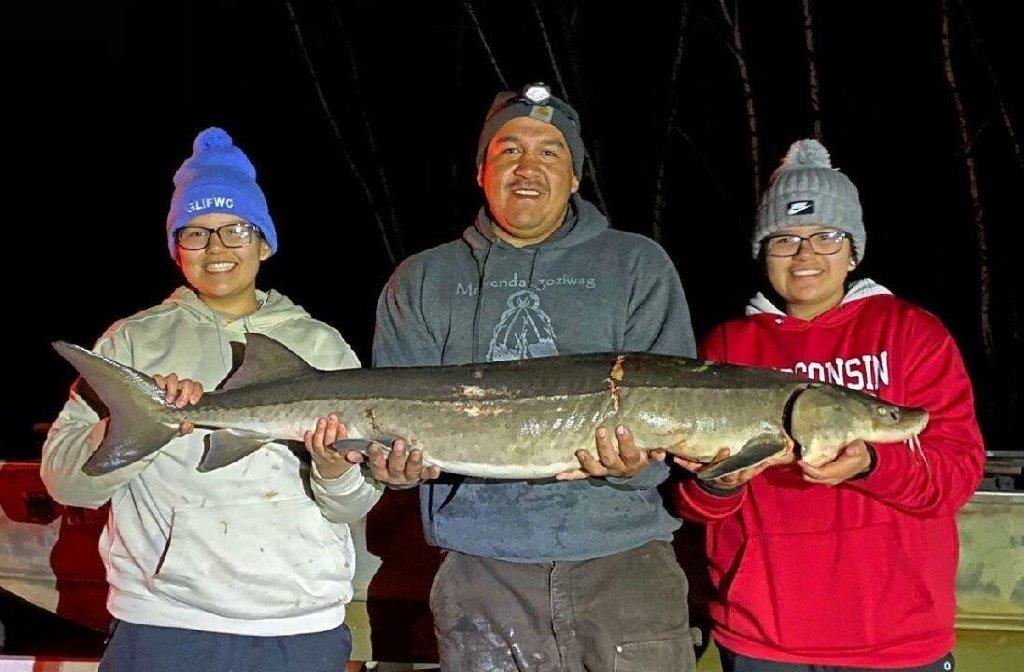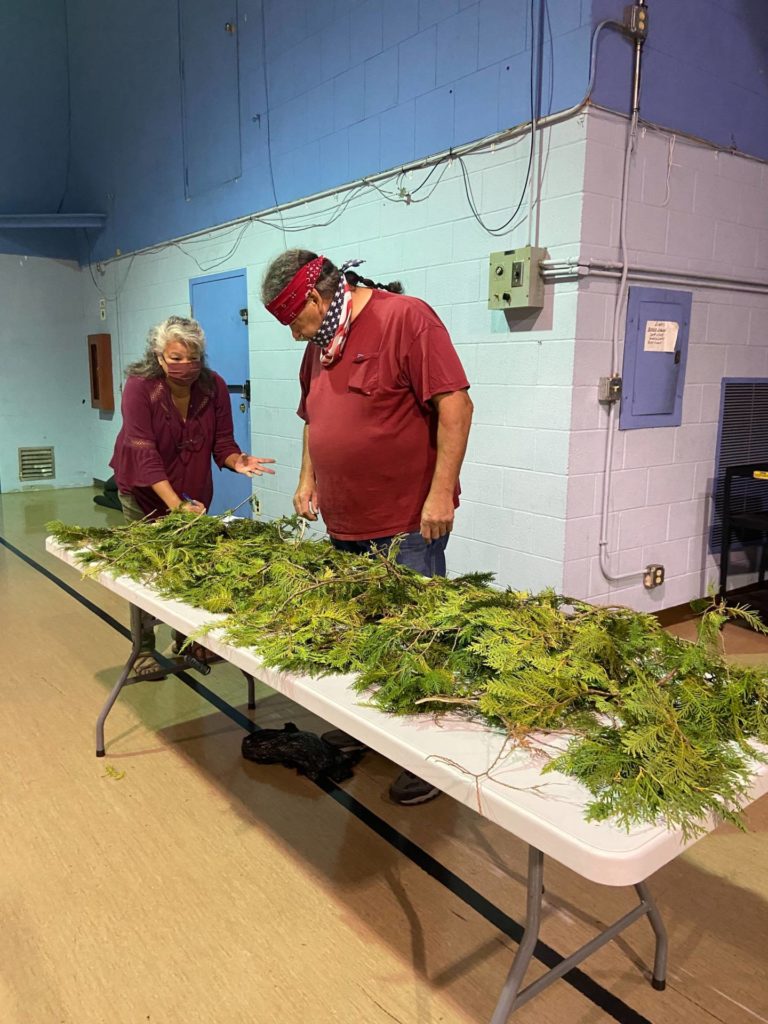Contact Information
24678 Angeline Avenue
Webster WI 54893
Phone: 715-349-2195
Gaynell LeMieux, Deer Registration Official
715-349-2195 x 5185
[email protected]
Tribal Harvest Management
The St. Croix Tribal Natural Resources Department assists Tribal members in traditional harvesting and hunting activities. Including participation in spring inland fish harvest, guidance in wild rice and wild plant harvests including non-timber forest products in ceded territories, and registration of wildlife harvested by tribal members.
A History of Natural Resources and the Seasonal Activities of the Ojibwe
In the Ojibwe Culture, there are four seasons of Ojibwe Life, Spring, Summer, Fall and Winter.
Spring and the Spearing Fish and the Tapping of Maple Trees for Sugar.
The Ojibwe reserved the rights to hunt, fish and gather on ceded land. The United States Government agreed to these provisions in the treaties of 1837 and 1842. Spearing rights were affirmed in Wisconsin on January 21, 1978. The primary off-reservation tribal fishery is the spring spearing and netting of fish harvested throughout the ceded lands of Wisconsin, Minnesota and Michigan. This fishing is highly regulated through lake quotas, nightly permitting, and designated boat landing. Tribal creel clerks and Resources Wardens count all fish harvested each night of the season. Quotas are adjusted daily based on previous nights harvest to ensure that lake quotas are not exceeded. [Sources: www.glifwc.org and St. Croix Tribal Historic Preservation Office]
Sugarbush and the making of maple syrup has been an important activity for Ojibwe people for centuries. Every spring entire Ojibwe families headed to their sugar camps a month before the sap was ready to flow to prepare for this important harvest. They watched the weather for warm days and freezing nights to catch the flow of sap. Then began the labor of establishing a camp, preparing firewood, carefully tending fires for the boiling of sap and preserving the syrup and sugar cake. Such labor among family and friends has a quiet festiveness, a celebration of another season which is sacred to the Ojibwe people. Today Ojibwe sugar camps represent a way of life that goes on, and where spirits of the past and present come together. [Source: St. Croix Tribal Historic Preservation Office.]
Summer
Summer was a time for planting and gathering. Historically, farming was an important activity for the Ojibwe, and each family cultivated their own garden. Foods grown in these summer gardens were eaten fresh and dried for winter storage. While the gardens grew, women and older children with birch bark baskets at their belts gathered the colorful variety of wild berries that ripen in the summer. Cranberries were eaten fresh, while blueberries, chokecherries, and juneberries were always dried. Raspberries were boiled down into a thick paste, and eaten like jam. The Ojibwe also made various hot and cold tea-like drinks by adding wild cherry twigs or wintergreen, raspberry, spruce or snowberry leaves to water.
Herbs for medicines could be gathered at any time, but it was customary to give special attention to this activity in August, when the plants were fully developed and most varieties were in bloom. Tobacco was always offered before gathering or harvesting anything from mother earth. The gatherer would assure that the harvest was intended for a good purpose, and that only what was necessary was taken. This respect would ensure that its use would be successful in healing. [Source: St. Croix Tribal Historic Preservation.]
Fall
As part of the prophesized Ojibwe migration from the east coast, the people were instructed to move west until they found “the food that grows on water”. Wild Rice grows on shallow lakes and streams, ripening in late summer. Traditionally each fall, the Ojibwe villages broke into smaller groups that went to family rice fields. While the men pole-pushed the canoes through the rice beds, women bent the heads over the canoe and knocked the kernels off using sticks. Ricing camps were abundant in Ojibwe country. When the canoe was full, the rice was taken to shore and dried in birch-bark sheets or flat rocks. The kernels of rice were parched or scorched over a fire and then hulled to remove the chaff from the grain. Thrashing, churning, or or treading the rice to remove the hull is hard work. Children were employed to “dance” the rice because their lighter weight prevented breakage and longer grains. Next the rice must be winnowed to remove the loosened chaff. Many Ojibwe continue to harvest wild rice today, and help feed their families and elders this gift from the Creator.
Fishing continued into the fall, and it was during this time that the Ojibwe secured a supply of fish for winter use. Just before the lakes froze, nets were set to capture fish near the shore. After the lakes froze over, men would spear fish through the ice using birch bark fish decoys. These fish were processed for food that lasted through the winter months. For centuries the Ojibwe people lived this rhythm of the seasons and sustainability. [Souce: St. Croix Tribal Historic Preservation]
Winter
For generations, winter has been a time for hunting and trapping. As today, the winter hunt began in November with the harvest of large game. The traditional Ojibwe hunting practices showed considerable ingenuity and methods perfected over generations. For example, they drove deer down forest pathways into sapling fenced traps, or used torches to hunt them at night when they are more active. Bears lumbered into dead fall traps set by experienced trappers. As a source of essential food as well as clothing, the “chase” of hunting was a critical occupation of Ojibwe men throughout the year.
Ojibwe men were also skilled trappers and were busy all winter setting and watching their traps. They studied the habits of the game, watching for fresh tracks and removing caught animals. Traps were distributed over a wide stretch of county to catch various animals, such as: otter, beaver, mink, rabbit, partridge and bear. [Source: St. Croix Tribal Historic Preservation]


